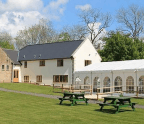BURNING QUESTION


Black powder, commonly called ‘gunpowder’, served the armies and navies of the world and later also the sportsman as hand-held firearms developed.
Black powder had one problem – smoke! Battlefield commanders were unable to see the enemy once the first heavy bombardments had been fired. Black powder is messy, fouling gun barrel bores, and the residues are prone to cause rusting.
It wasn’t until the mid-1800s that French chemist Henri Braconnot took the first steps towards ‘smokeless’ powders. Braconnot treated fibrous cellulose with nitric acid to produce an explosive polymer. The early products were difficult to handle safely, but by the 1880 the first safe nitrocellulose-based propellants were being used.
Smokeless powder
Early smokeless powders from the 1880s onward met with varying responses from shooters. The lack of thick smoke and much reduced fouling were greatly appreciated. But some shooters felt smokeless powders were less consistent, some they were too weak, while others said they might be too strong! There were occasional mishaps, too.
Cartridges were hand loaded for customers by an apprentice working at the back of a gun shop. Some used an early loading machine, such as the patented Erskine wooden tray type. This measured the powder by volume, not weight, just as with black powder. For this reason early smokeless powders were made as ‘bulk’ powders, so that their volume compared safely with black powder equivalents.
However that obscured the advantages of nitrocellulose powders – they could produce
You’re reading a preview, subscribe to read more.
Start your free 30 days



